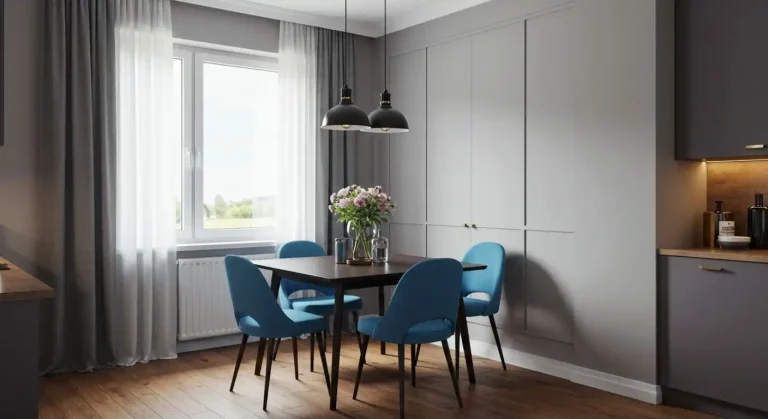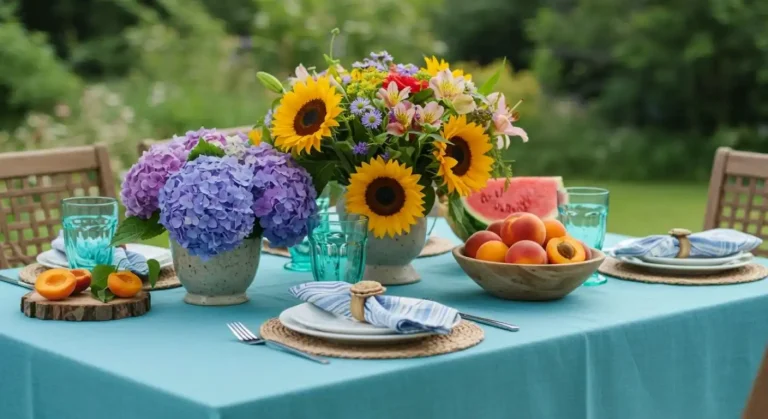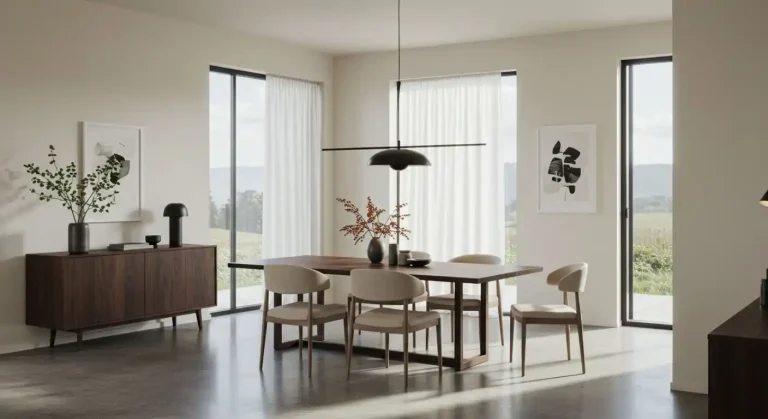17 Contemporary Dining Room Ideas to Elevate Your Space Effortlessly
Creating a modern dining room can really change how you enjoy meals and gatherings.
The right design makes your space feel fresh and inviting—no need for a full remodel.
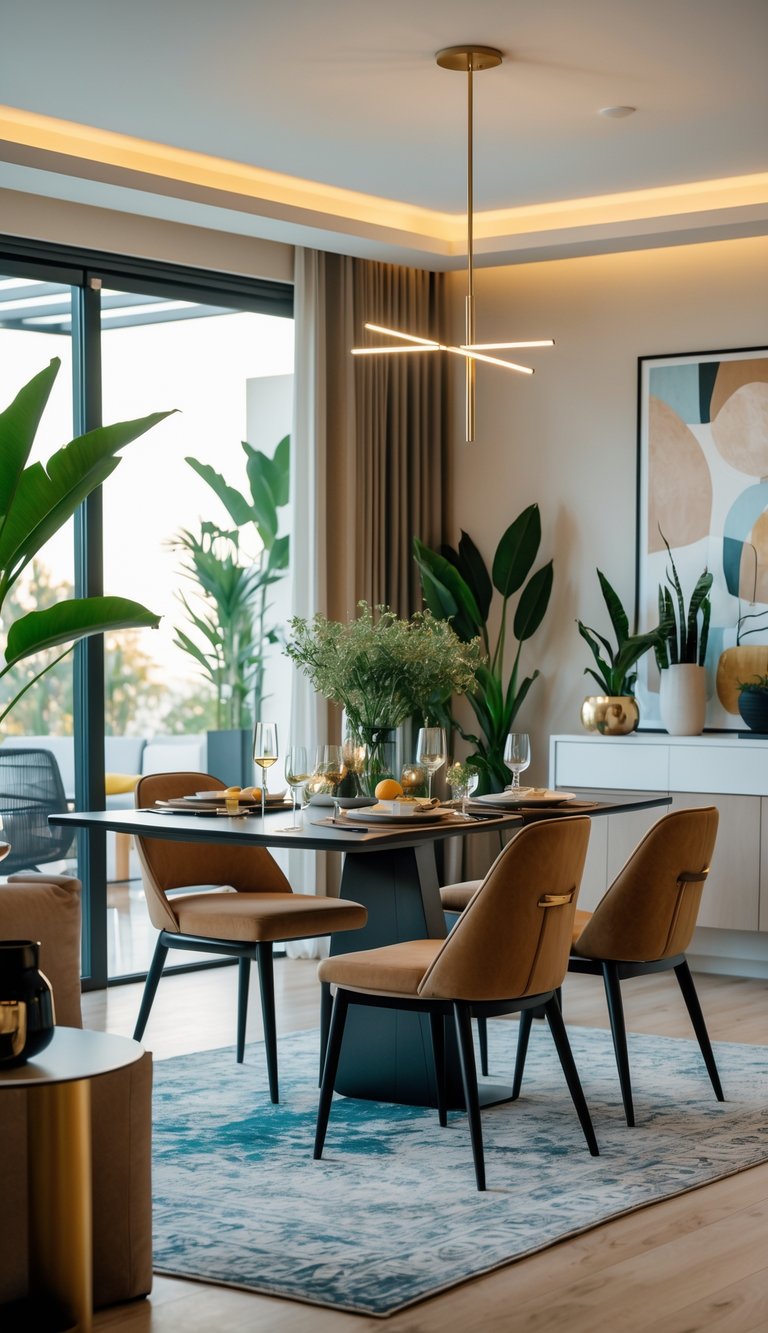
These 17 contemporary dining room ideas offer simple ways to update your space with style and function.
Whether your dining area is big or small, you can make the most of what you have.
1) Use natural wood finishes for tables to add warmth
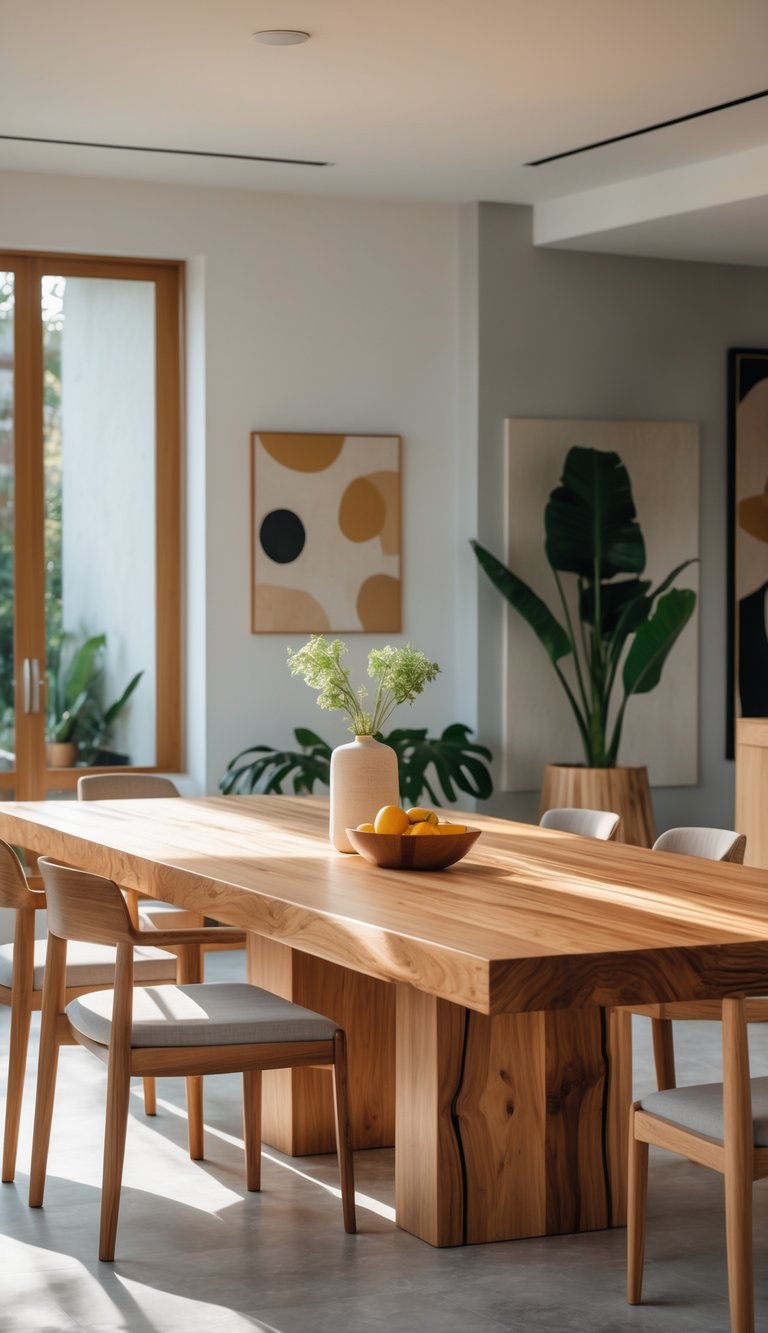
I like using natural wood finishes for dining tables because they create a warm, inviting feel. The wood grain adds texture and interest without extra fuss.
Tables made from solid or reclaimed wood give the room a sturdy, timeless vibe. I usually pair these tables with simple chairs to keep things balanced and natural.
Natural wood works with almost any style, especially when you mix it with neutral colors. It just makes the dining area feel cozy.
2) Incorporate unique-shaped dining tables to enhance visual interest
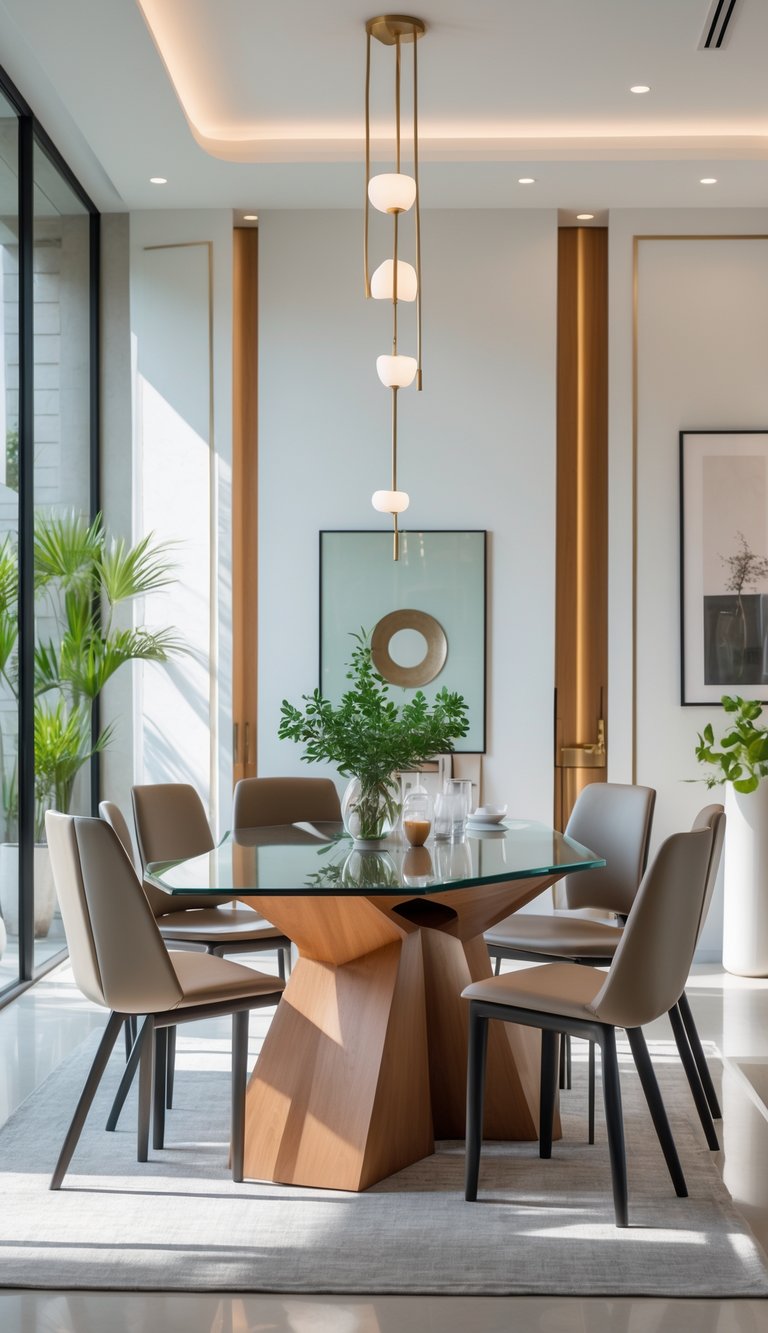
I find that unique-shaped tables add character to a room. Round, oval, or even asymmetrical tables break up the usual lines.
These shapes create a softer flow and make conversation feel easier. The space looks more modern and interesting.
Picking a bold table design brings personality to your dining area without making it feel crowded.
3) Install large wicker pendant lights over the dining table
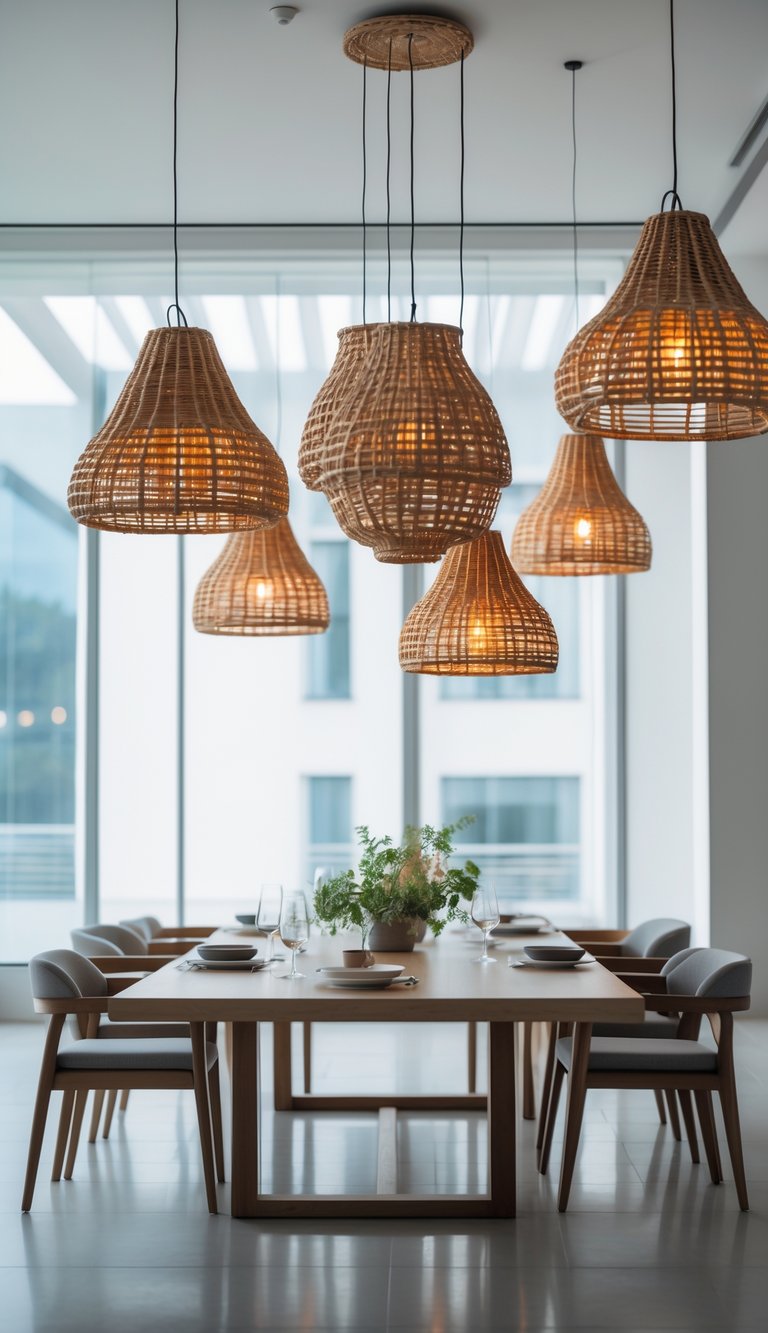
Large wicker pendant lights above the table add texture and style without feeling heavy. The light they give off is soft and natural, which works in lots of different designs.
Hang them about 30-36 inches above the table. That way, you get enough light without blocking anyone’s view.
The woven look adds a subtle pattern overhead. I think it balances modern and boho vibes really well.
4) Add greenery in elegant vases as natural centerpieces

Greenery makes a simple, fresh centerpiece in any dining room. I like using succulents or ferns in clear or ceramic vases for a natural touch.
Choosing elegant vases—glass or stone—keeps things modern and tidy. It adds life to the room but stays subtle and fits with lots of styles.
5) Choose woven dining chairs to blend comfort and style
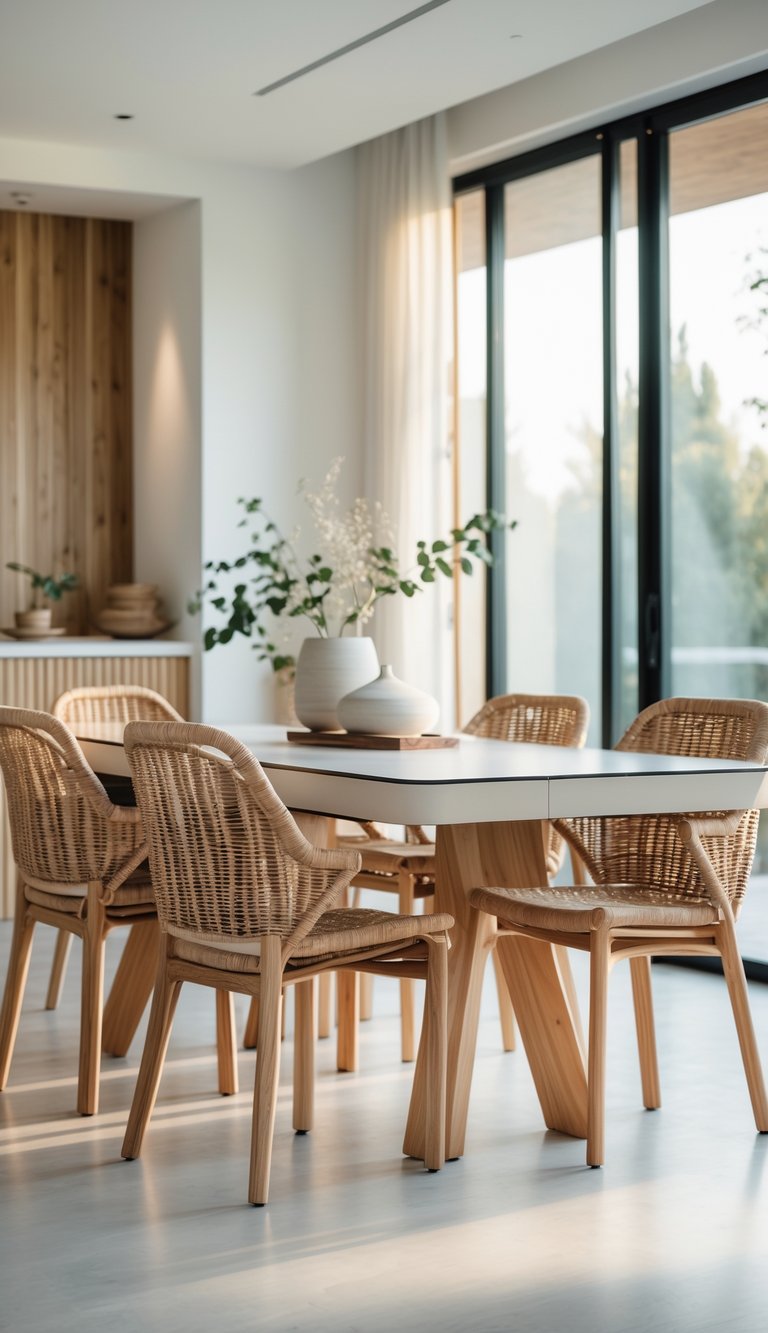
Woven dining chairs add texture and warmth. They’re comfy without being too bulky.
Materials like rattan or wicker work in modern spaces and bring a relaxed, natural vibe. They still look neat and put-together.
These chairs fit different budgets and styles, so it’s easy to work them into my dining area. They strike a nice balance between style and comfort.
6) Ground the dining area with a contrasting wall color
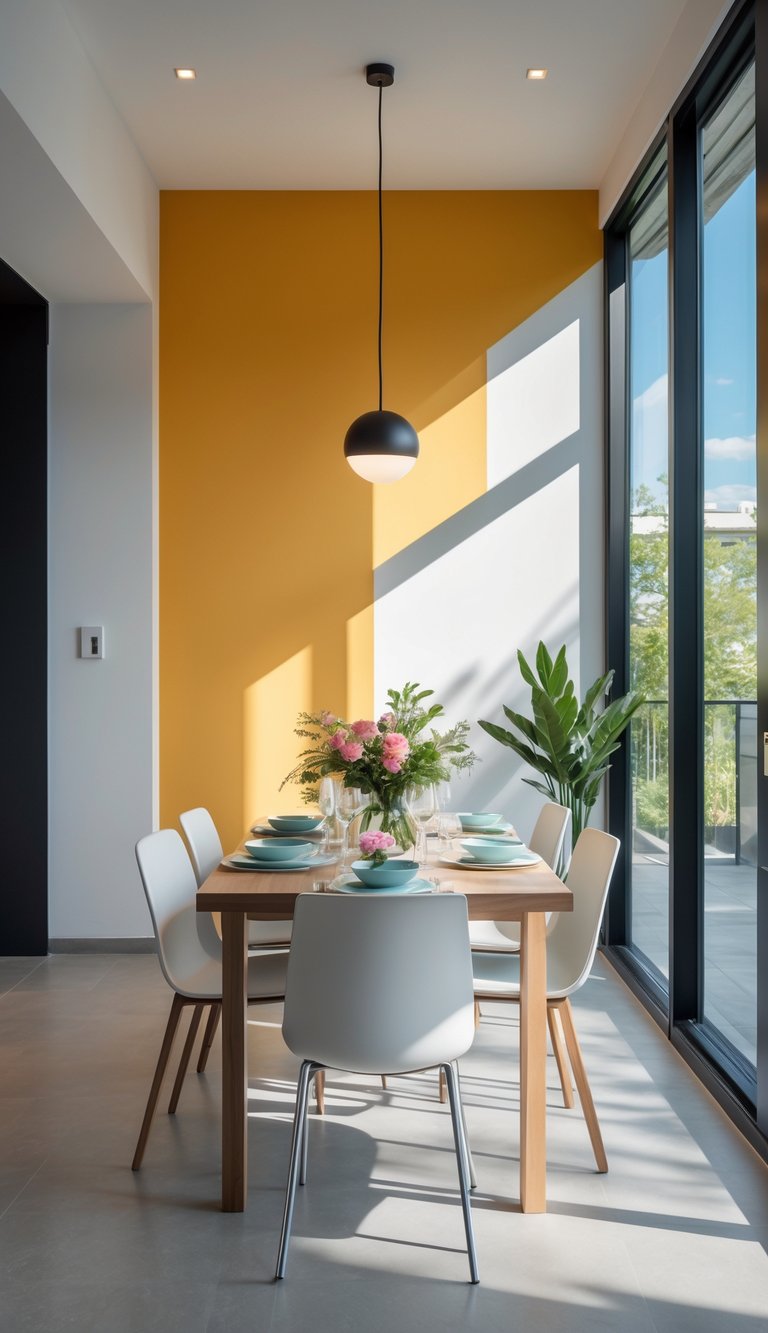
Using a contrasting wall color gives the dining area a strong presence. It helps set the space apart, especially in open layouts.
Pick a darker or bold color for one wall to add depth and focus. I usually pair it with lighter walls or soft accents so things don’t get too intense.
7) Use patterned wallpaper to create a focal point
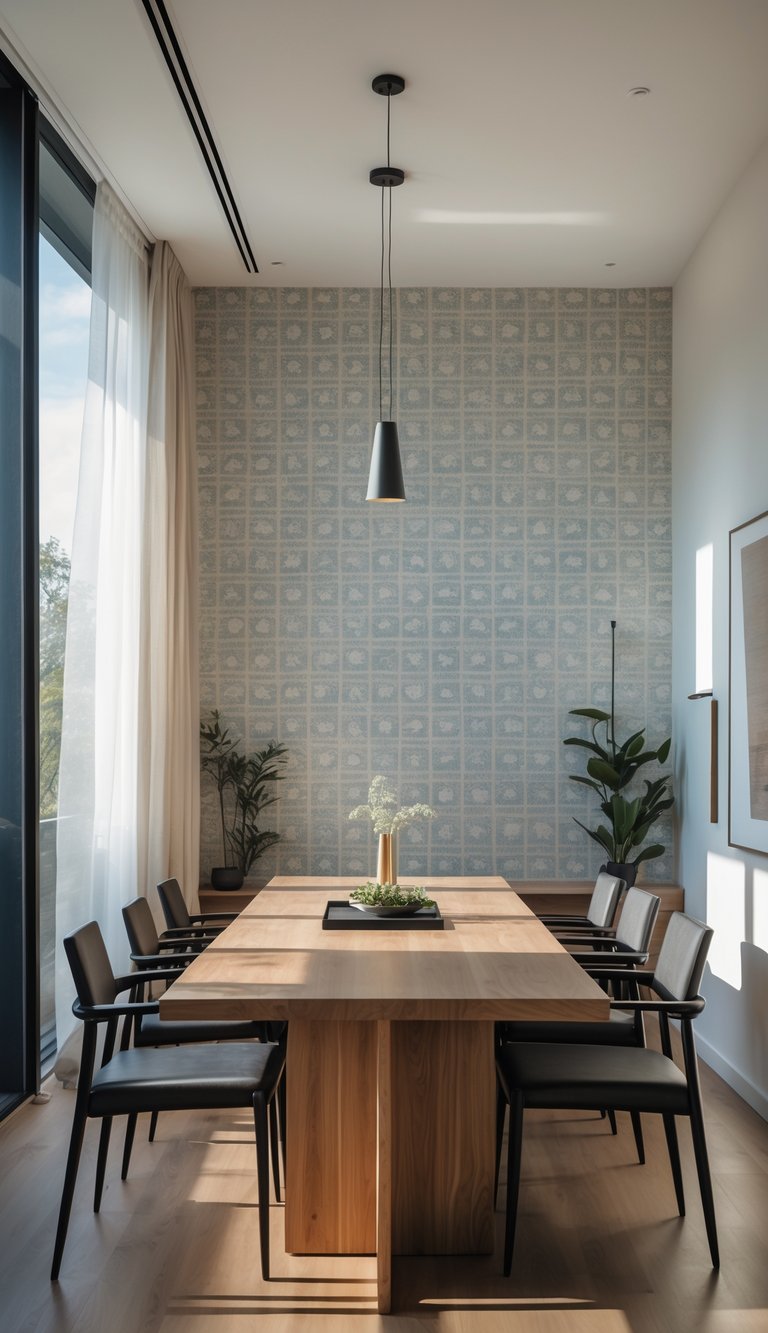
Patterned wallpaper on one wall draws attention and adds interest. I like using bold patterns or metallic finishes for a stylish look.
Pairing wallpaper with simple furniture keeps things neat. It’s an easy way to define the dining area and make it feel special.
8) Opt for marble tabletops for a luxurious touch
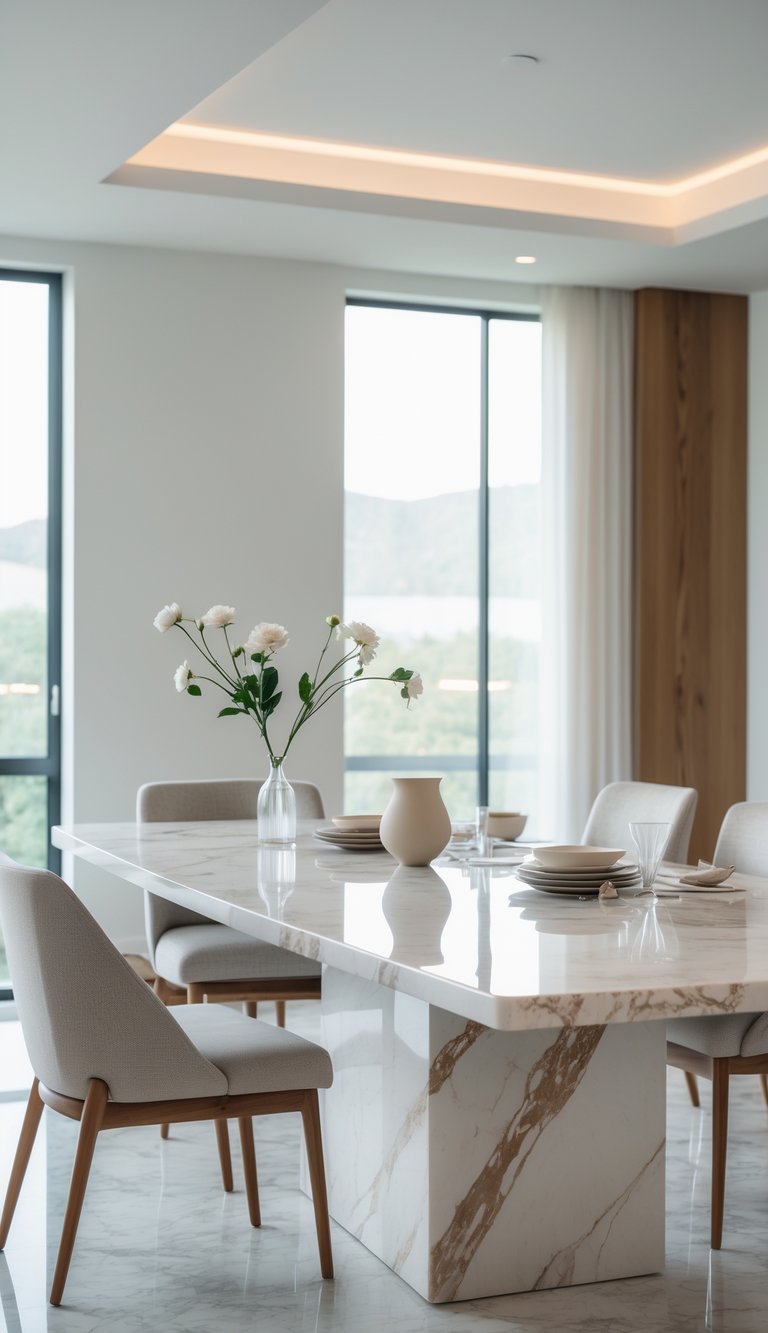
Marble tabletops give any dining room a clean, elegant vibe. Their smooth surface and natural patterns look stylish without being over the top.
Marble lasts when you take care of it. It matches lots of chair styles and colors, so it’s a flexible pick for modern spaces.
9) Select expandable or modular dining tables for flexibility
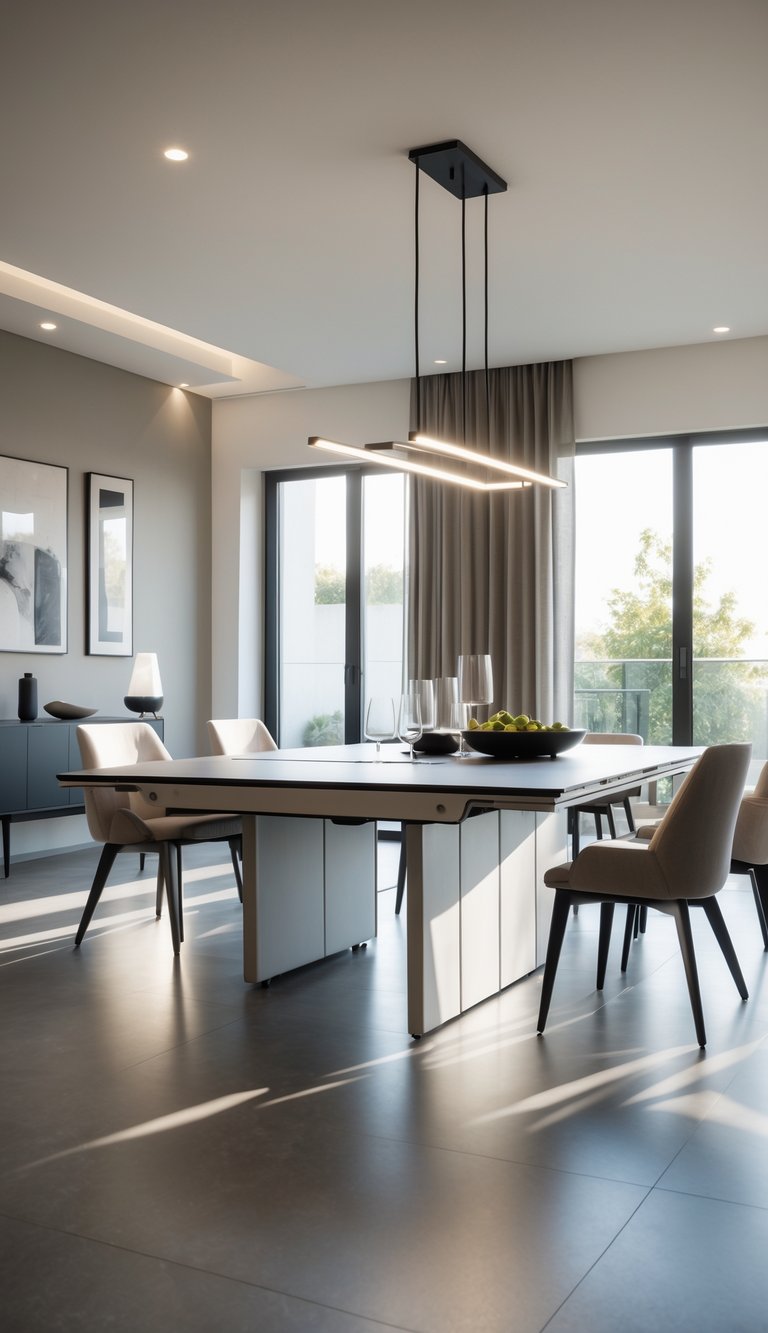
Expandable or modular dining tables help you save space but still seat plenty of people. I love how easily you can adjust them—small for daily use, bigger for guests.
You can seat anywhere from 2 to 12 people with just one table. The natural wood and modern designs fit most rooms.
10) Include upholstered seats on chairs for extra comfort
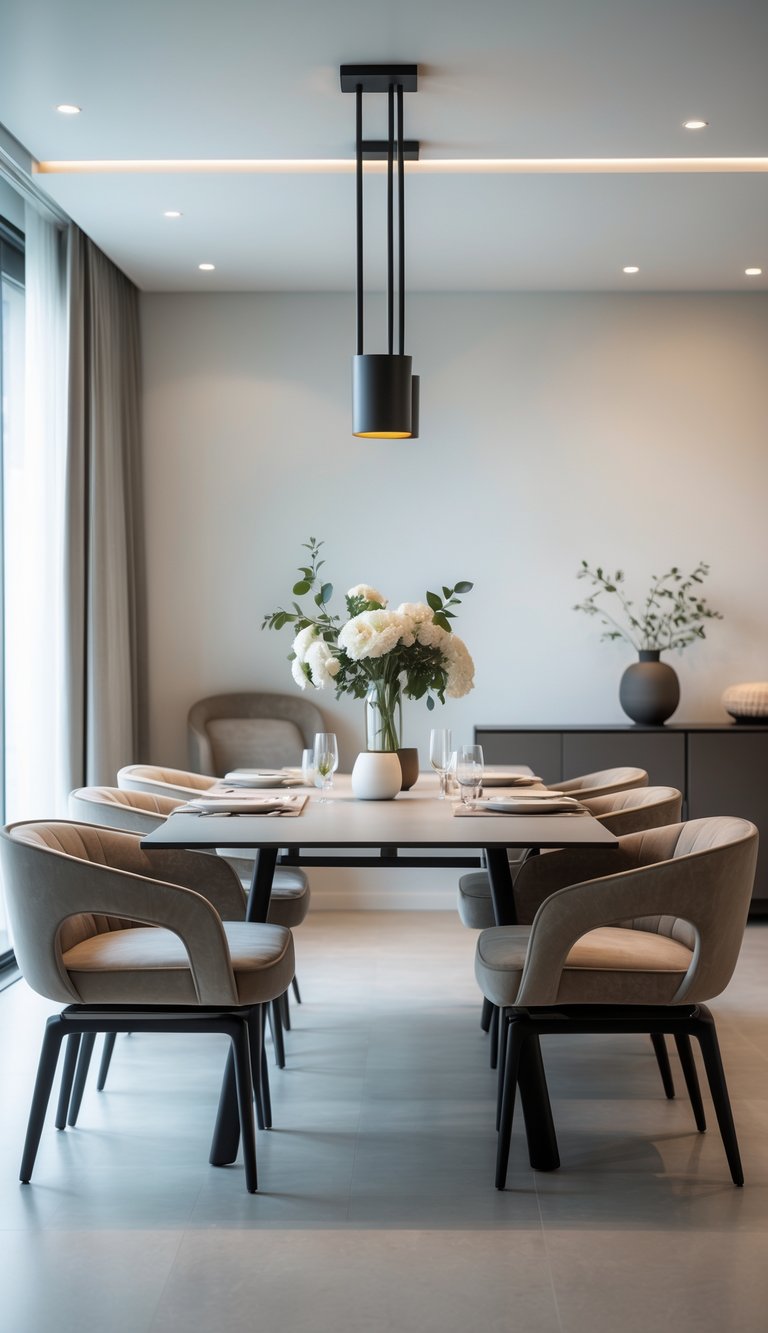
Upholstered seats add a lot of comfort to dining chairs. The soft padding makes long meals or conversations much more enjoyable.
Chairs with fabric or leather covers can match your room’s style and still feel cozy. Good back support and cushioning matter, too—it keeps everyone comfortable without giving up on looks.
11) Place a large area rug underneath the dining set
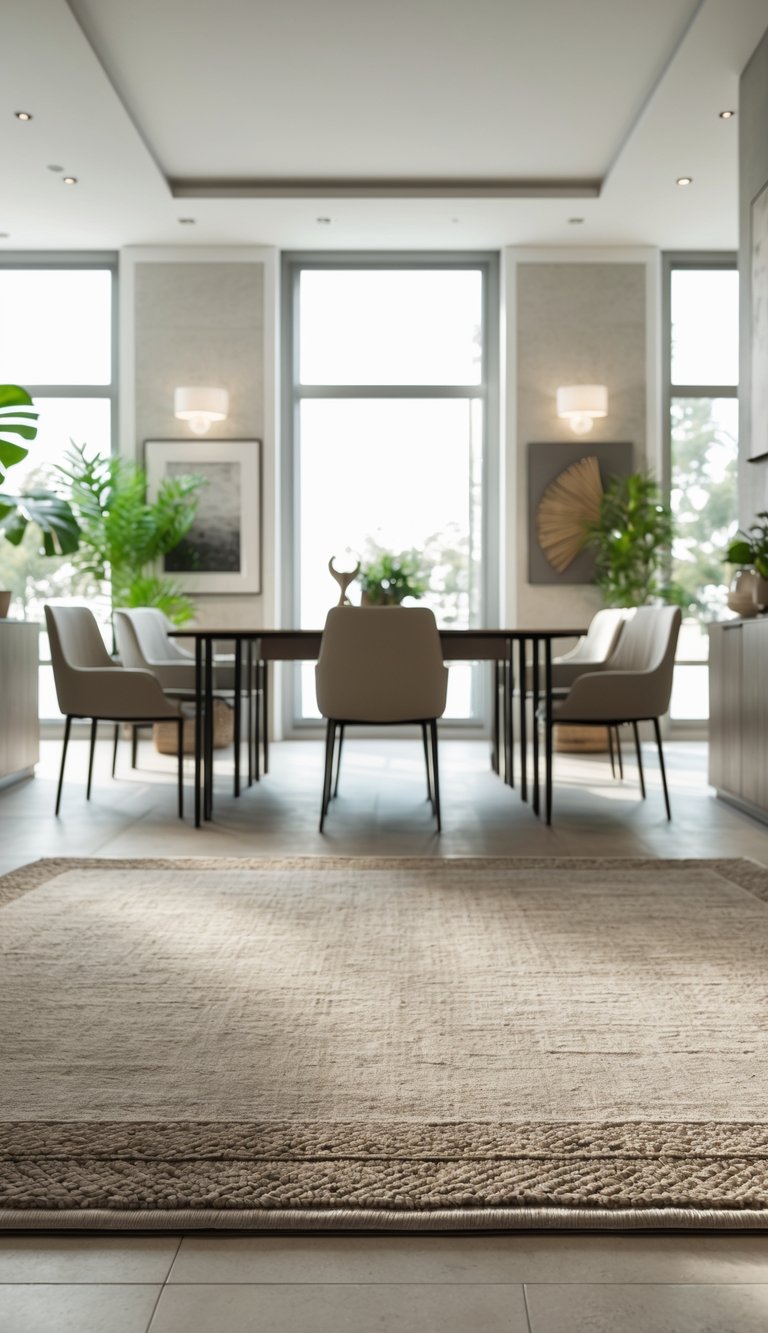
I always say a large area rug under the table helps define the dining zone. It adds warmth and texture, too.
The rug should go at least two feet beyond the table on all sides, so chairs stay on it even when pulled out. Pick a rug with easy-to-clean material—accidents happen, right?
12) Add a sleek buffet with a decorative mirror above
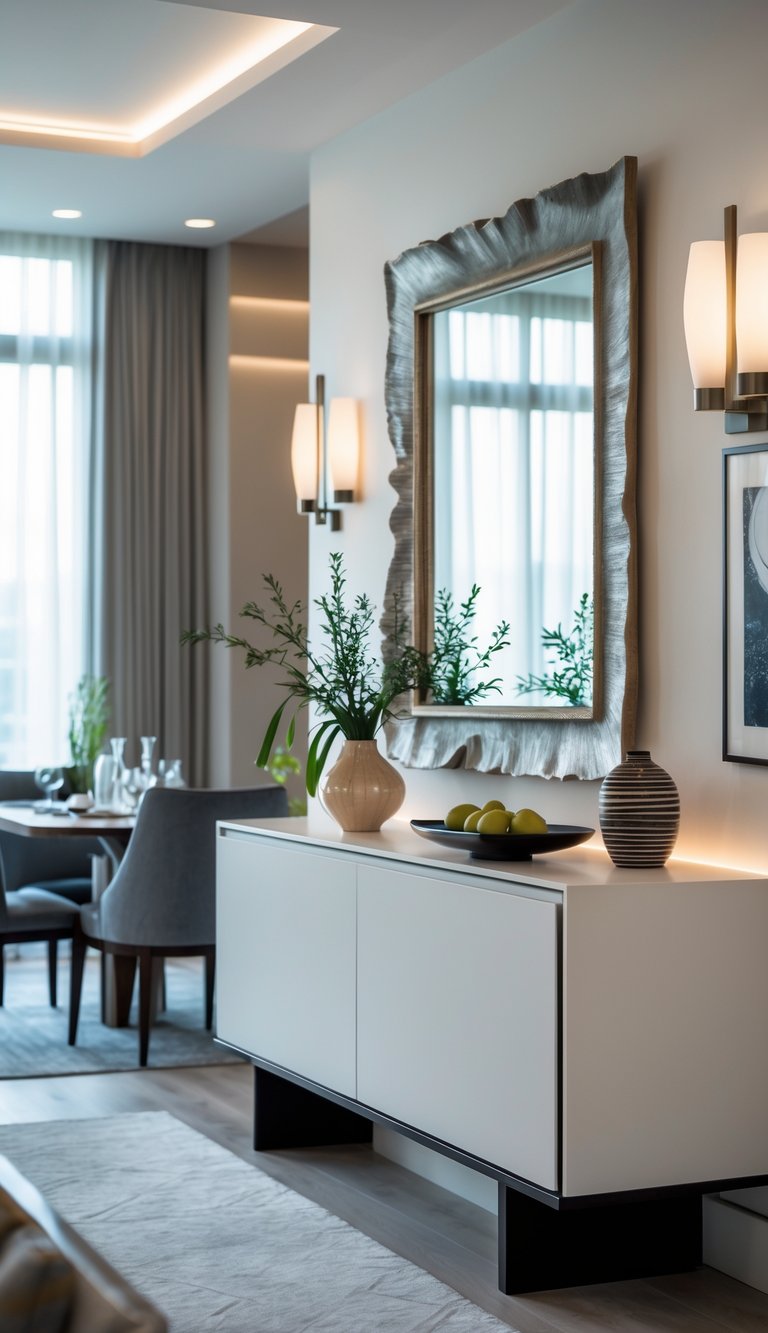
A sleek buffet gives you style and storage. It keeps things organized without making the room feel crowded.
Putting a decorative mirror above the buffet reflects light and makes the room look bigger. I like simple framed mirrors that match the other finishes in the space—it just ties everything together.
13) Use minimalist pendant lighting for modern appeal
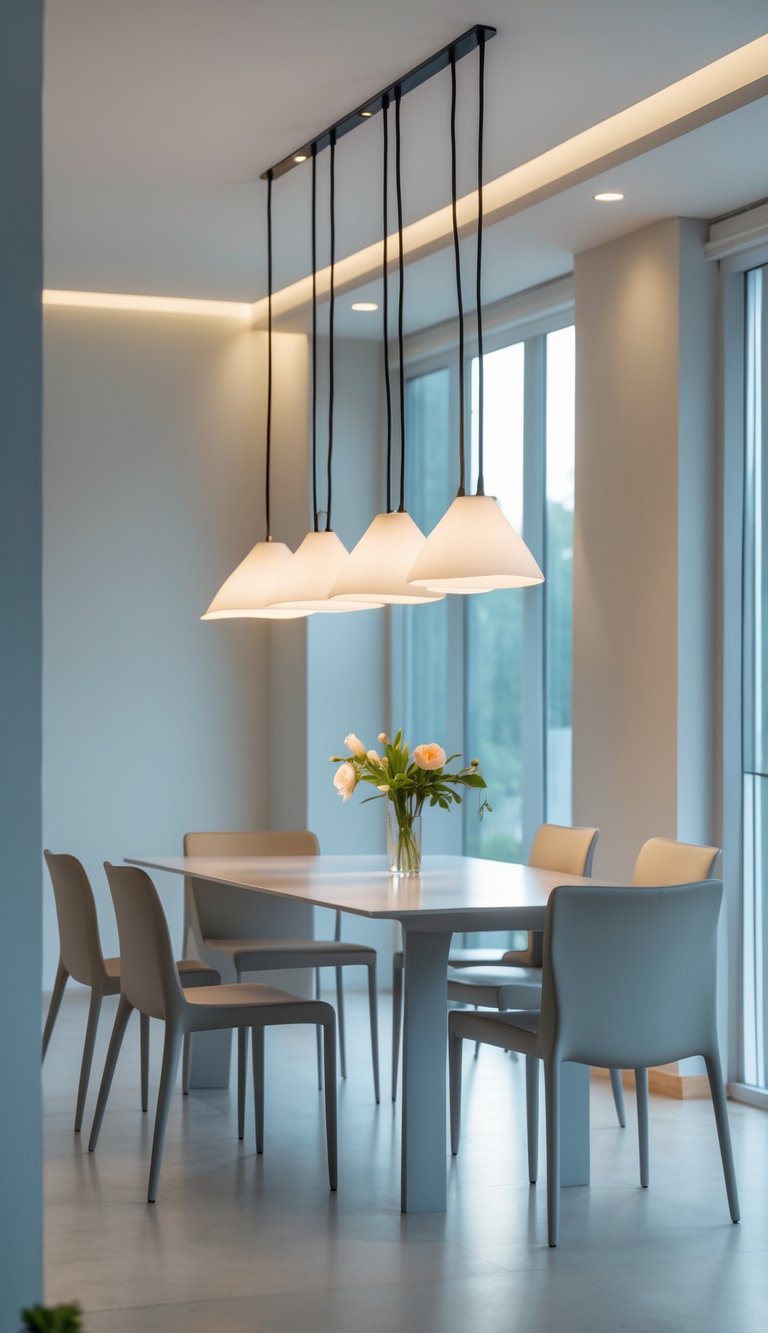
Minimalist pendant lights add a clean, modern look to the room. Simple shapes and neutral colors work best.
These lights give enough brightness without being distracting. I like designs with smooth lines and basic materials—they blend right in with other modern decor.
14) Incorporate benches alongside chairs for versatile seating
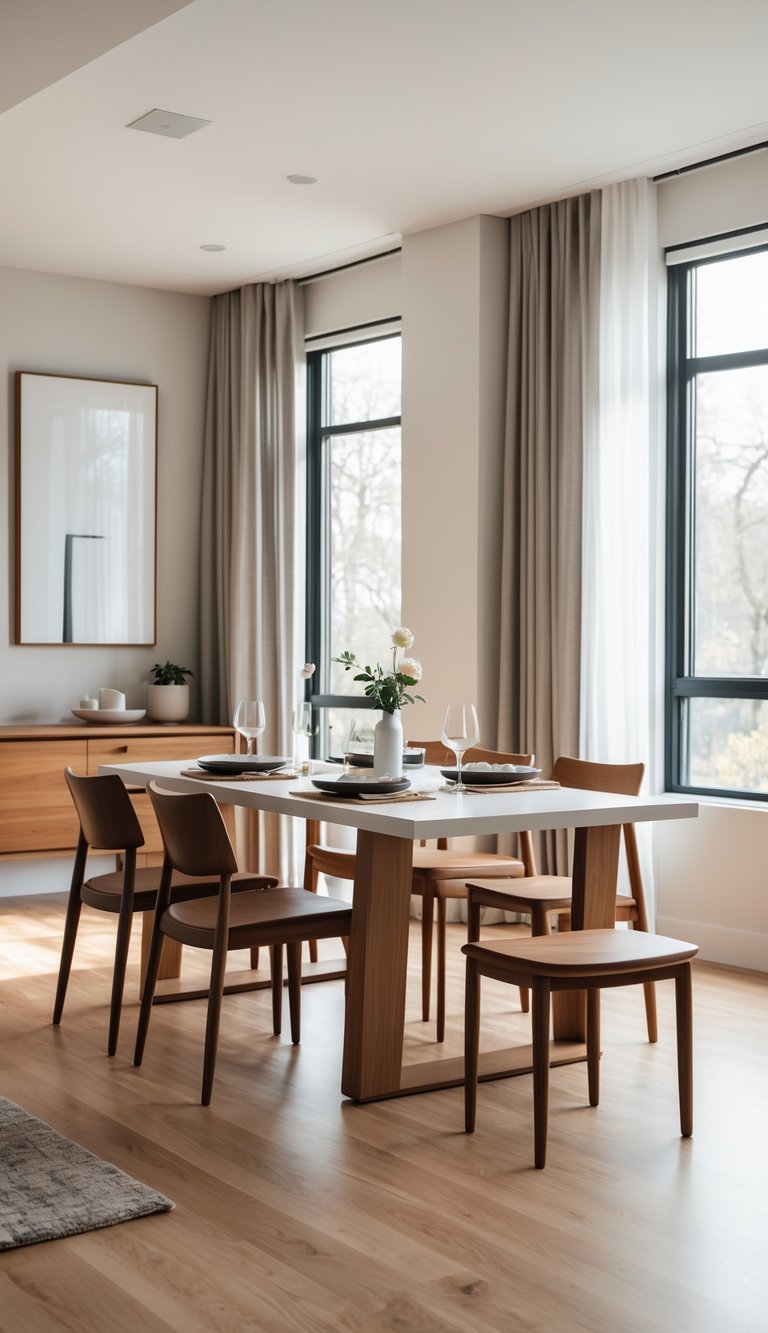
I like using benches with chairs because it adds flexibility to my dining space. Benches fit more people when needed and save room when they’re not in use.
They create a balanced look, mixing styles and making the area feel less formal. If you add backrests to benches, you get a bit more comfort without giving up style.
This setup works well for families or when I host guests.
15) Feature statement art pieces on dining room walls
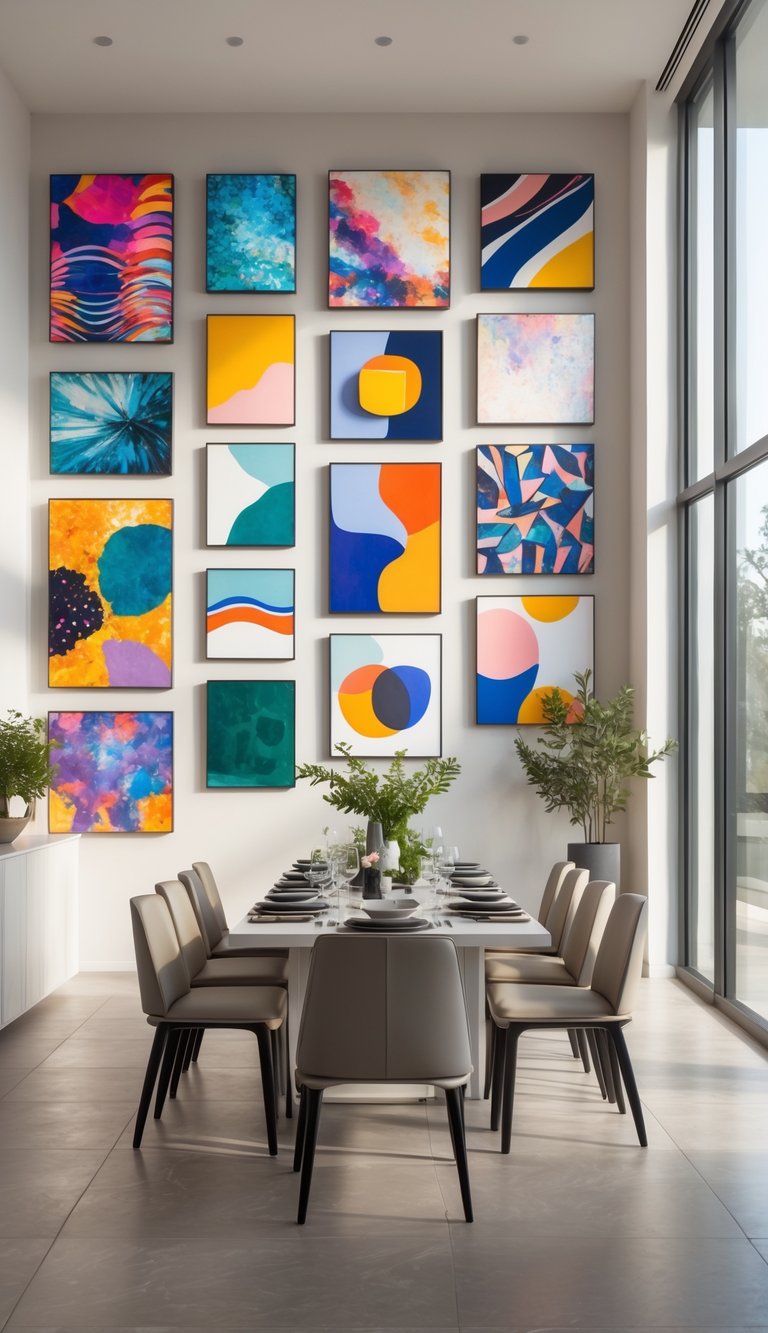
I like to use large statement art pieces on my dining room walls to create a strong focal point. A big canvas or bold painting adds style without crowding the space.
Choosing art that fits your room’s colors and mood helps tie everything together. Sometimes just one striking piece is enough to change the whole feel of the room.
It makes the space look more modern and personal.
16) Mix textures like wood, wicker, and metal for depth
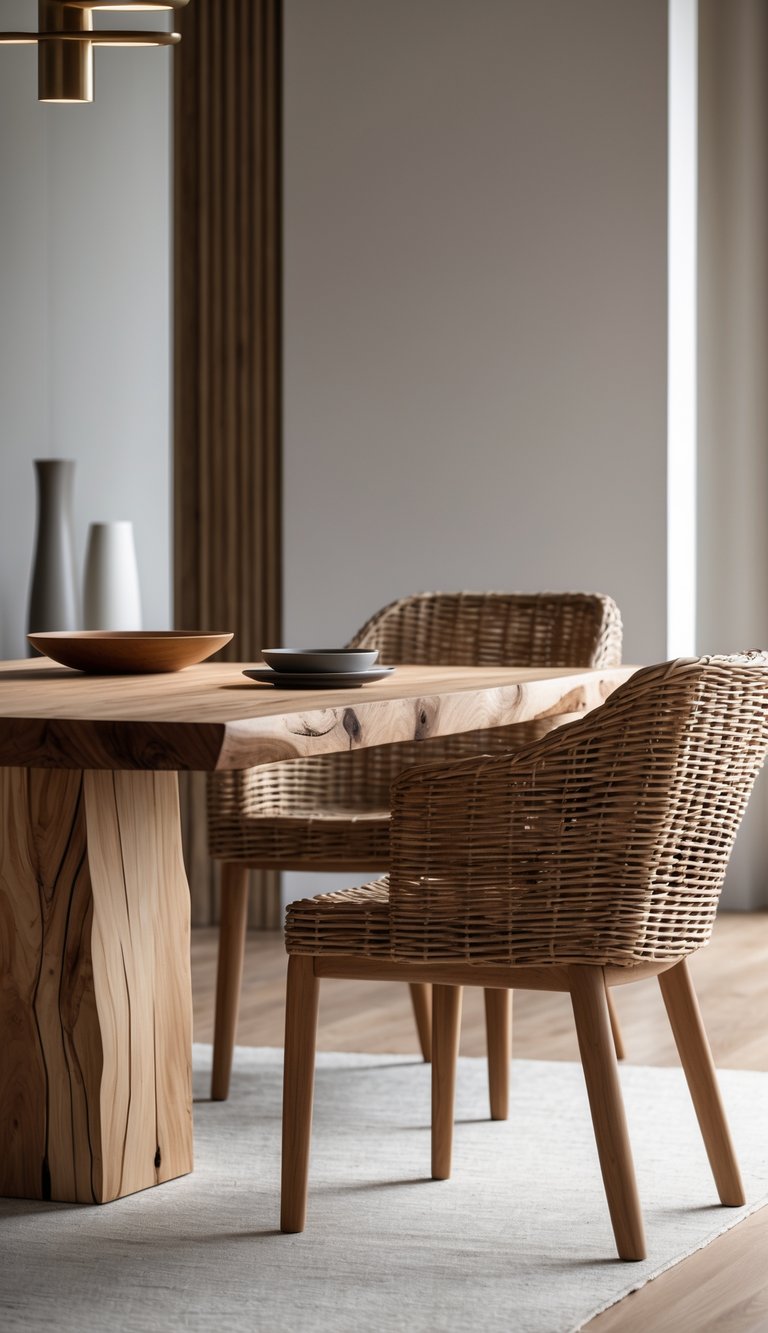
I like to mix different textures in a dining room to keep things interesting. Combining wood, wicker, and metal adds layers that catch the eye.
Wood brings warmth. Wicker softens the look, and metal gives a modern touch.
Using these materials in furniture or decor helps the space feel natural but stylish. The simple contrast makes each piece stand out a bit more.
17) Use neutral tones with pops of color for balanced style
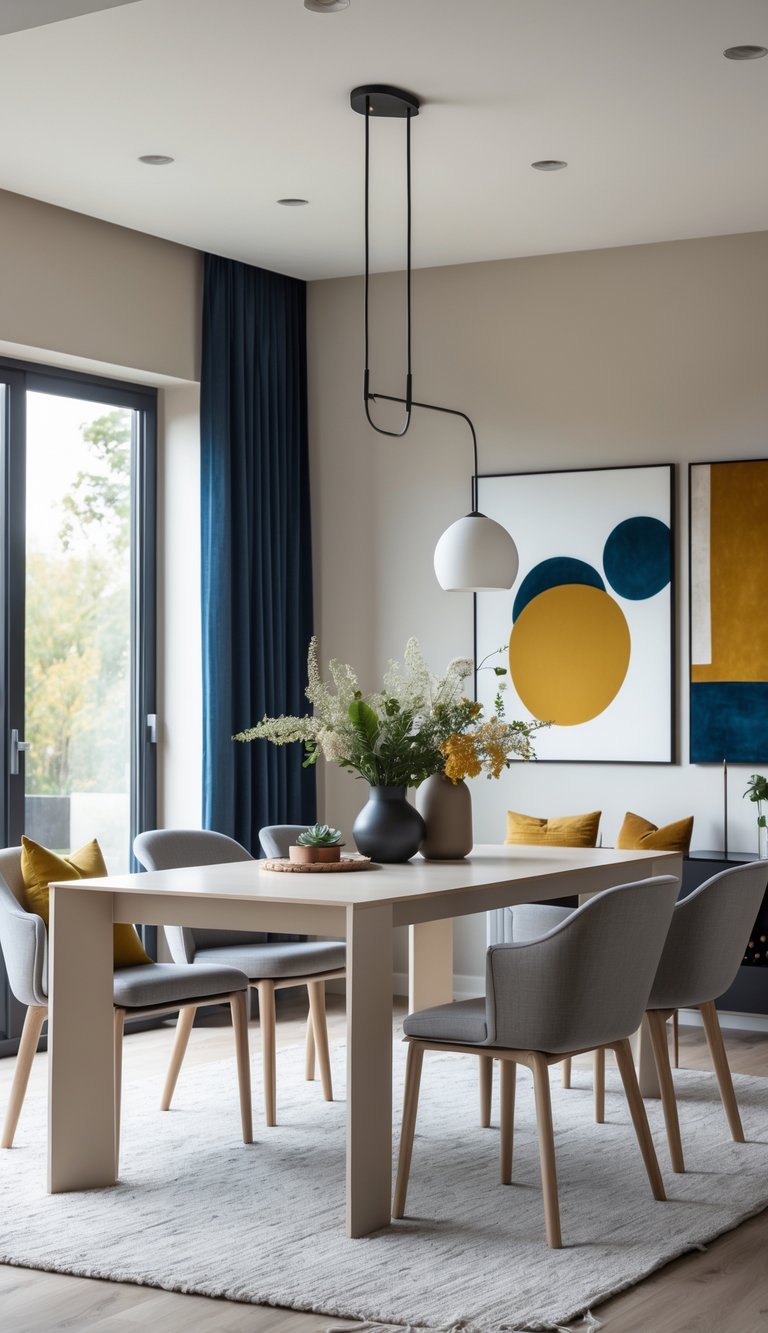
I like using neutral colors like beige, white, or taupe in my dining room. These colors create a calm and timeless base.
To keep the space interesting, I add small pops of color. A bright rug or colorful cushions can bring life without overwhelming the room.
This mix keeps the room balanced. It feels relaxing and stylish at the same time.
What Defines Contemporary Dining Room Design?
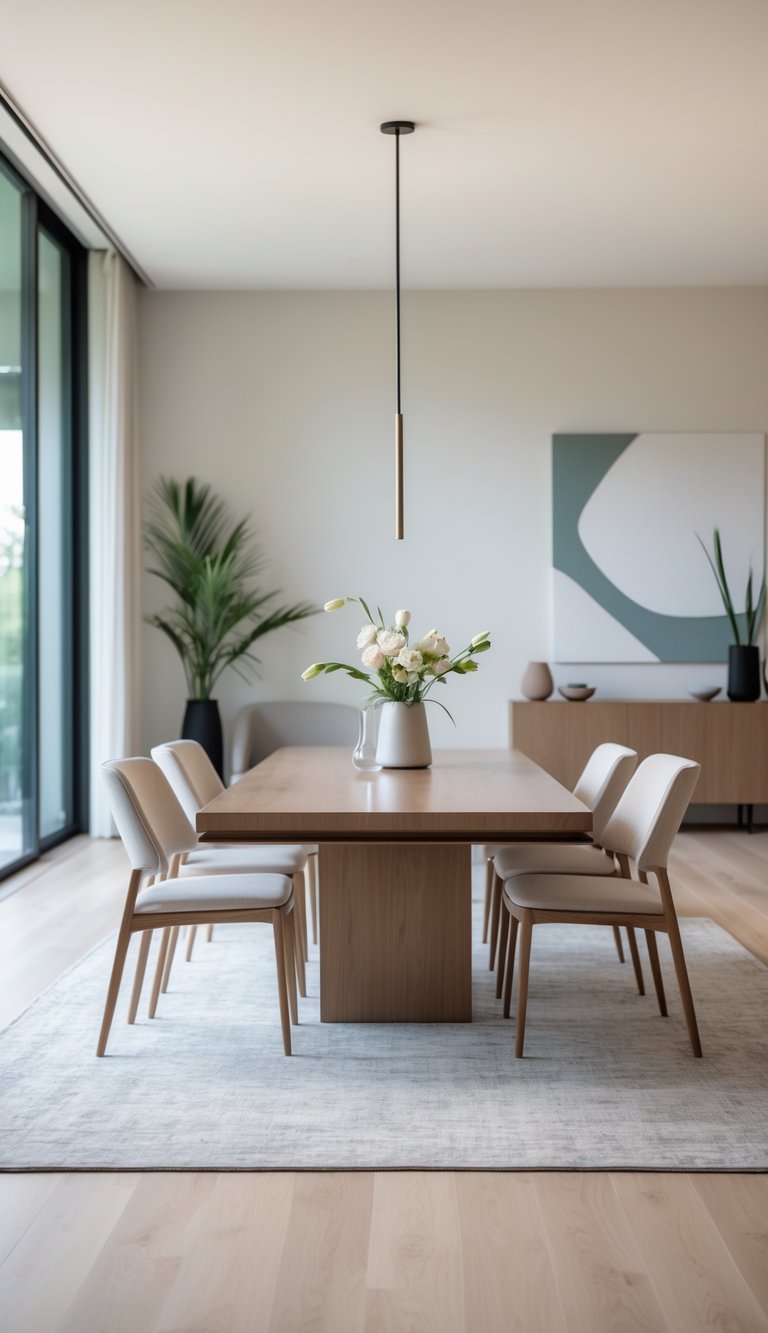
Contemporary dining rooms focus on simplicity and function. The style highlights clean lines, open spaces, and a balance between form and comfort.
Lighting, furniture, and layout all play key roles in creating the right atmosphere.
Key Elements and Features
In a contemporary dining room, I look for clean lines and minimal clutter. The furniture usually has smooth surfaces and simple shapes.
Chairs and tables often blend materials like wood, metal, and glass. Lighting is adjustable and plays a big part.
I prefer fixtures that can be dimmed to fit different moods. Natural light matters too, so windows or open layouts are common.
Color schemes are mostly neutral with occasional bold accents. You’ll find whites, grays, and blacks mixed with soft earth tones or a splash of bright color in the decor.
How Contemporary Differs From Modern and Traditional Styles
Contemporary design adapts current trends, while modern style is tied to a specific time period, mostly the early to mid-1900s. Contemporary mixes influences, so it’s more flexible.
Traditional style focuses on ornate details and classic shapes. I avoid those in contemporary spaces.
The feel of a contemporary room is airy and open. Traditional rooms usually feel more crowded or formal.
Furniture in traditional rooms is heavier and more decorated, while contemporary pieces are light and straightforward.
Contemporary dining rooms often merge with other spaces. The dining area might flow into the kitchen without walls in between. That kind of openness isn’t common in traditional designs.
Integrating Contemporary Dining Spaces With Open-Concept Living
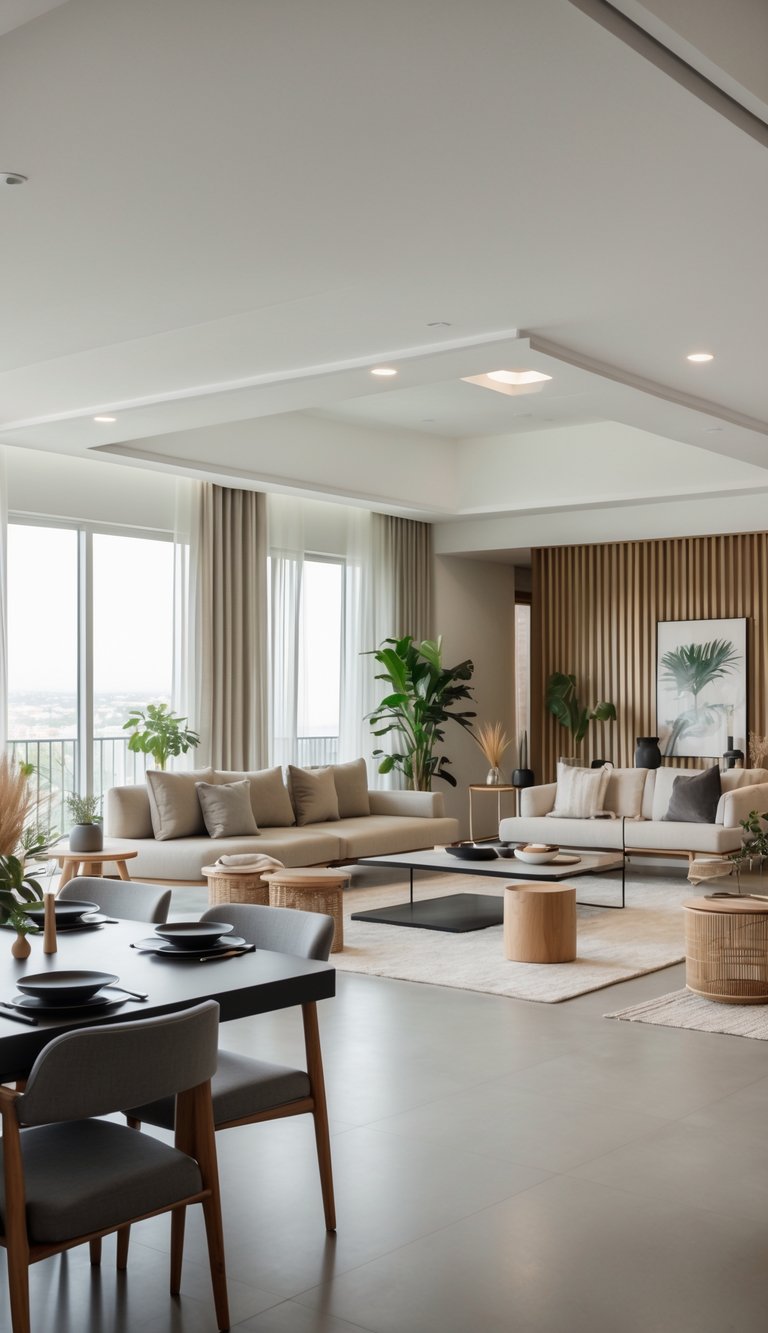
Blending the dining area with the living space takes a few smart choices to keep the spaces connected but still distinct. I focus on how furniture arrangement and color choices can tie rooms together and create a balanced, inviting atmosphere.
Seamless Flow Between Rooms
I make sure the dining and living areas flow smoothly by placing furniture to create clear pathways. Rugs help define each space without making the room feel divided.
For example, a rug under the dining table marks the eating area while leaving open floor between the two zones. Lighting plays a big role too.
I use similar light fixtures or coordinating styles in both rooms. This consistency keeps your eye moving naturally from dining to living.
Avoiding bulky furniture lets the space breathe and makes it easier to move around the open plan.
Choosing Cohesive Color Palettes
Choosing colors that work well together really helps maintain harmony between the dining and living areas. I usually start with a base color and then add accents that show up in both rooms.
Soft grays or warm neutrals make great main tones. Brighter cushions or a splashy piece of artwork can bring in pops of color without feeling random.
Matching wood finishes or metal accents pull the furniture together visually. Even wall decor should echo shades that show up in both spaces, so nothing sticks out awkwardly.
This kind of color coordination goes a long way toward making the whole open concept feel calm and connected.

